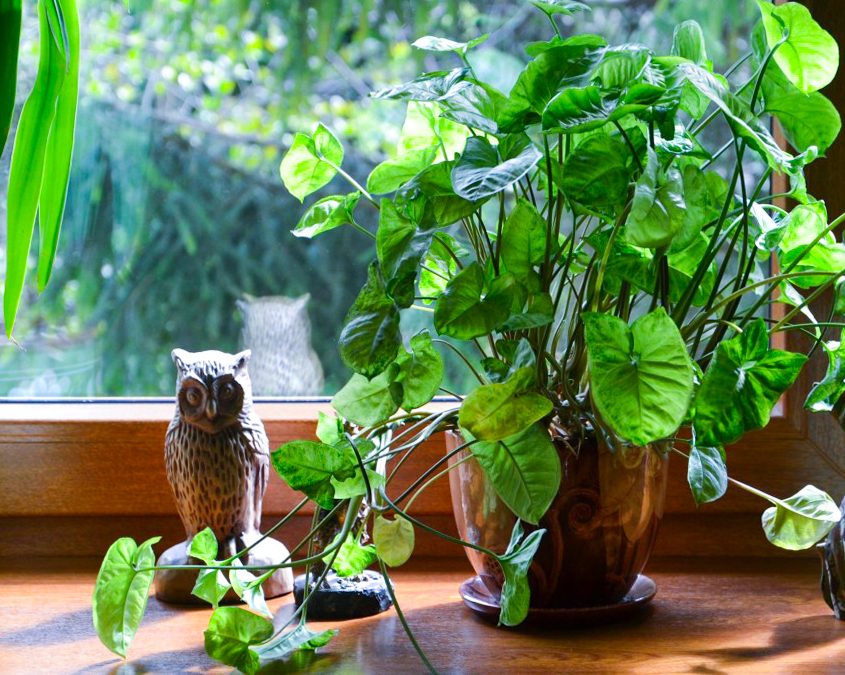Growing houseplants in the Northeast comes with its own set of demands each season. Regardless of whether your plants go outdoors or not, you will have several challenges that are specific to our region. All indoor plants are currently adjusting to lower light levels, lower humidity, and issues caused by turning on the heat. Whether you have just brought your plants in from a summer vacation outdoors or kept them indoors throughout the seasons, there are ways to help them thrive.
For plants that summered outdoors, fall is a time to monitor for pests. If your plants were sprayed for pests on a regular schedule prior to coming inside, a watchful eye should be enough to catch anything going wrong. If your plants were not sprayed for pests, an almost daily inspection is a necessity.
Plants coming in for the winter will tend to go through some level of acclimation. Some houseplants (looking at you, ficus benjamina), will lose up to half of their leaves after coming indoors. Resist the urge to repot or fertilize these plants until after their temper tantrum is over and they have resumed active growth. Plants going through acclimation will also need to be allowed to go slightly drier between thorough waterings.
If your houseplant collection lives indoors year-round, this is still the time to be on pest patrol. As the weather cools outside, some pests will find their way in. Some will even hitchhike into your home on your clothing.
Striking a balance between having plants close enough to windows to receive sufficient light and protecting them from cold drafts is important. Some plants enjoy a chilly windowsill and will actually benefit from the frosty temperatures. Others will struggle with even a bit of cool air. Knowing a little about where a plant naturally grows will help you to understand exactly how much protection it requires. Most commonly grown houseplants are able to take significantly lower temperatures than people expect.
Grouping plants together, placing individual plants on humidity trays, and using electric humidifiers are the most effective solutions for low humidity. Humidity levels below 40-50% will increase the need for watering. It will also allow spider mites to thrive. Gardeners who have forced hot air as their heat source in their homes will have to make some sort of humidity plan for all but the sturdiest of plants.
Fall is a time when gardeners are nesting for the winter. It is natural to want to refresh your plants by repotting. If a plant is actively growing and dries out faster than you can keep up, go ahead and repot now. If the plant stays moist for at least a week, buy yourself a pretty pot or basket and set the plant inside rather than potting directly. Your nest will be properly feathered for the dark cold days ahead and the plant will appreciate being left to grow.
Items to keep on hand for fall plant care:
1. Neem oil spray. This will take care of most pests without making your home toxic.
2. Insecticidal soap. This works for all of the pests neem doesn’t kill.
3. Fresh sterile potting soil.
4. Festive seasonal pottery or baskets. The beautiful part of not planting direct is that you can swap out containers to give some character to your collection!
5. A hygrometer to track humidity levels.

